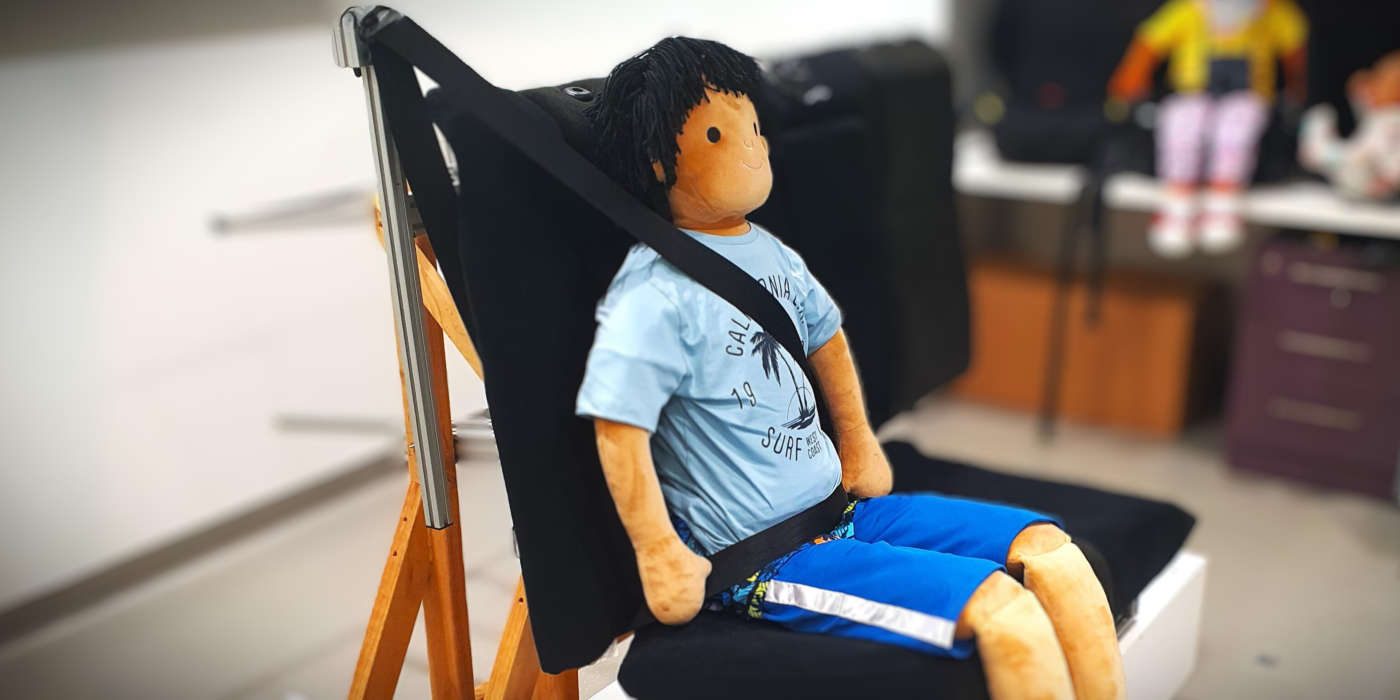
SuSTAInY: Supporting successful transition of children to adult seatbelts in cars
Background
Optimal crash protection requires the most appropriate restraint for a child’s size. For children <7 years, Australian law dictates the restraint type to be used. For children ≥7 years, parents can choose the restraint that best suits their child, for example using a seat belt alone, or a booster seat. However, there is confusion about when their children can safely use seat belts. This stems from the fact that optimal protection from a seat belt requires a good match between child size and geometry of both the seat belt and the vehicle seat. Yet there is a wide variation across different cars. This coupled with intrinsic variations in child size makes it difficult to provide advice using age or height. The result is that many children >7 years inappropriately use seat belts, increasing risk of injury in a crash.
Using a user-centred approach we have increased comprehension of child restraint by almost 30%. These findings indicate user involvement in developing communication tools is key to their effectiveness. To address this, the research team conducted focus groups with parents, and analysed outcomes from ‘think aloud’ protocols. The findings from the focus groups and ‘think aloud’ protocols served as a proxy for user input. Results indicate that resources to support parents and carers making the transition decision need tools that increase their knowledge of the criteria of a good seat belt fit as well as address intrinsic reflective motivation.
Aim
In the current project we plan to conduct iterative testing of a prototype educational resource and undertake detailed examination of the task-related decision process. This research will make fundamental contributions to understanding how to communicate with parents to ensure optimised decision making. This study will produce the first user-informed resources to support accurate parental assessments of a child’s seat belt fit.
Research Methodology
The study will be conducted according to the following timeline:
- Ethics approval: December 2023
- Recruitment of Participants: January 2024 – June 2024
- Data Collection: January 2024 - July 2024
- Analysis of Data: August 2024
- Publication of Research: October 2024
This project will use iterative consumer-testing of a draft prototype and will include the following quantitative and qualitative data collection methods:
- Questionnaires (i.e. baseline knowledge and demographics, and ii. post-assessment knowledge and acceptability)
- Observed correctness of transition decision (decision-making assessment)
- Analysis of ‘think-aloud’ protocol during decision-making assessment.
Prototype materials were developed by consolidating the results from the qualitative analysis of transcripts from previous ‘think aloud’ protocols, focus groups, and resource acceptability studies using the Behaviour Change Wheel and COM-B Model. In the current project, the prototype materials will be subjected to consumer testing using a methodology developed by Sless et al. This mixed methods design involves iterative testing of Prototype Educational Resource materials with cohorts of 10 participants. To ensure the final intervention resource is tested and optimised for a range of people from different demographic profiles, we intend to conduct the work in three geographical regions. Data analysis includes quantitative assessment of individual participant scores out of 100% for correct decision-making in the task analysis, and correct responses to knowledge questions. Iterative testing will continue until more than 80% of all group types achieve 100% in both scores across three geographical regions until that the criterion is met in each geographical region.
Participants will attend one of three dedicated research study sites located in Campbelltown, NSW; Liverpool, NSW; and the Neuroscience Research Australia (NeuRA) laboratory in Randwick.
Decision-making assessment
All participants will be given the Prototype Educational Resource and provided time to review the materials. All participants will then be asked to restrain a fit-for-purpose doll in three different seating conditions on the custom-built. After restraining the doll in each condition, they will be asked to decide whether or not the doll is appropriately restrained in the adult seat belt in each condition. The three seating conditions will be manipulated according to the doll’s anthropometry so that one condition provides good fit (both in terms of the seat belt fit and seat cushion length), one provides poor fit, and one only partially provides good fit i.e., appropriate seat belt fit but poor cushion length. Good fit will be defined as a good match in geometry between the doll’s leg length (knee to hip) and seat cushion length; and between the doll’s shoulder height and sash belt height (such that the sash belt crosses the mid-point of the doll’s shoulder).
Participants will be asked to ‘think aloud’ as they restrain and observe the doll in each condition and make their decisions. A researcher will record the correctness of each decision the participant makes. Each trial will be video recorded and transcribed verbatim to be used to conduct qualitative behavioural analysis. Photographs will be taken of the doll in each of the three fit conditions after the participant has made their determination.
Post-assessment knowledge and acceptability questionnaire: Once participants have completed the decision-making assessment, they will be asked to complete a survey to assess their knowledge of the key elements required to make correct decisions about transitioning to an adult seat belt, and to obtain feedback on their level of acceptability of the materials they were provided with.
Outcomes: Observed fitting and securing of a doll into an adult seat with lap/sash belt, comprehension of materials, and subjective feedback of materials will be the outcomes of each round of consumer testing. The trial’s final outcome will be prototype informative materials.
Current Status
The current status is the recruitment phase.





